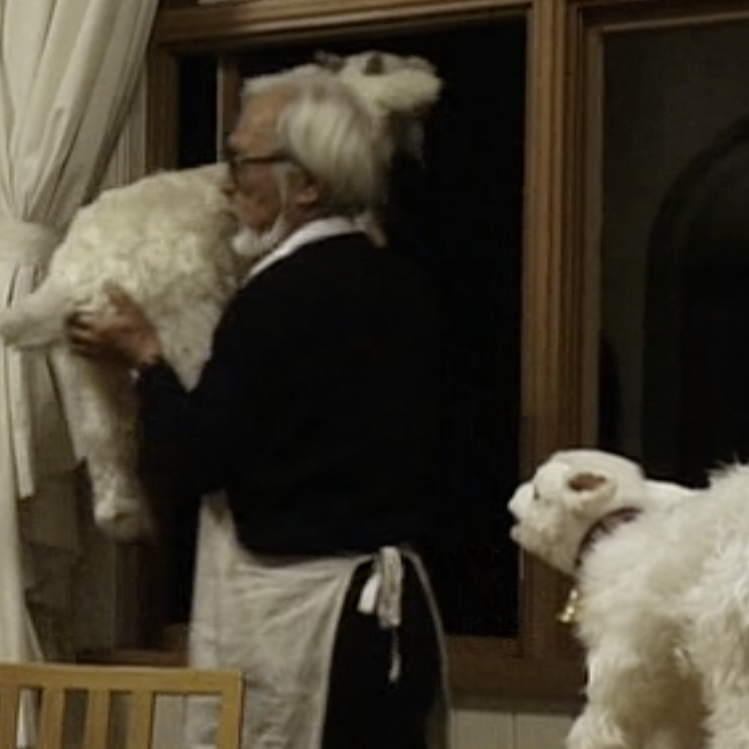
The Kingdom of Dreams and Madness by Chris Molnar
The documentary The Kingdom of Dreams and Madness (2015), directed by Mami Sunada, and its televised follow-up Never-Ending Man (2016), directed by Kaku Arakawa, are a diptych of creation. The first follows the quotidian high tension of master animator Hayao Miyazaki producing his penultimate film The Wind Rises (2013) with Studio Ghibli, the second begins directly thereafter as he declares his retirement and tries to start from scratch, making a simple short film about a cute caterpillar in the modern vernacular of CGI.
Kingdom is about art on a grand scale, the undisputed master of an artform deep into crafting a late masterpiece (itself a metaphor for the artistic process—planes standing in for commercial art) with the renowned institution of artisans he built together with Toshio Suzuki and Isao Takahata. You see Miyazaki’s love-hate relationship with his older mentor and peer Takahata; Suzuki panicking along with a younger producer, Yoshiaki Nishimura, as Takahata blows deadlines; Suzuki recruiting Neon Genesis Evangelion mastermind Hideaki Anno as the main voice actor because Miyazaki thinks his voice is “weird” in just the perfect way; and of course the idealized studio (compared obliquely in Never-Ending Man and the Miyazaki book Turning Point (2014) to the magical, intricate working bathhouse in Spirited Away (2001))—old-school with a house cat, Yakult delivery, busy animators and group calisthenics.
Takahata himself is slowly working on his brushy, white-space heavy, very “late-period” final film The Tale of the Princess Kaguya (2013) on the other side of the complex in Studio 7, portrayed in Akira Miki and Hidekazu Sato’s overlapping, companion documentary Isao Takahata and His Tale of the Princess Kaguya (2013) as an entirely different kind of mind-melting ordeal. A non-artist with a childish scrawl, Takahata’s limitations force broader formal innovations in style, editing and color continuity, taking vast amounts of time to subtly break every rule, rules most audiences don’t know exist. Kayuga captures the primordial power of the sketch and storyboard, a nouvelle vague or even punk (if such a word could even begin to make sense in the context of a 78-year-old master animator adapting a 10th-century Japanese narrative) sensibility disrupting the basic tenets of animation in a way Miyazaki opposes yet must accept as an intrinsic part of Ghibli, even as his teacher and rival’s methods confront and confuse the animators.
Both documentaries together show what Never-Ending Man focuses on: art as competitive, surging desire. The CGI team tasked to the caterpillar short is useless compared to Miyazaki’s seventy-something hand; worse, he takes a meeting with a team working on AI animation, who show him a disgusting, hideous being dragging itself algorithmically. “An insult to life itself,” he calls it, and if the dipshit showing him the algorithm didn’t start crying, I’d assume the only reason anyone would show perhaps the greatest maker of children’s films such an image would be to make him so upset that he has to unretire. The charming stuffed Heidi (1974) goats he places outside his home in Kingdom are less prominent, even the audio is often unmic’d. This is guerilla creation about a restless creator. Here is an artist who is still sharp not because he has a clockwork studio (they’ve all been laid off at this point), but because of deep belief; because of the patience and agility to create constantly; because he compulsively thinks about new ways to communicate, about fresh challenges, internal and external, among them the twin demons of old age and new horror, which we all find rushing up to us quicker than it seems ever happened before. The film Miyazaki starts to think up at the very end is The Boy and the Heron (2023), which debuted in America in December.
I’ve now seen Heron twice now, but even then it hasn’t fully sunk in. It is the most autobiographical and the most fantastical Miyazaki movie, thick with ideas and references and worlds, creatures and characters, fresh lines of emotional logic, alive with a new looseness, almost an anime INLAND EMPIRE (2006), with his animators working boldly in rareified freedom like early 70’s Miles Davis sidemen, enacting their own techniques as they animate the master’s vision. The way it knowingly plays with the idea of the wizard Granduncle as Miyazaki, his invented universe disappearing without an heir, would be sad if it wasn’t so blindingly alive with humor and thought. In the beauty and grotesquerie of the Heron, the way the metaphor somehow opens up the more directly it addresses artistic creation, the film becomes the perfect compliment to the preceding documentaries; watching real creative drive enacted in reference to itself, deeply and mystically. That’s the only reason for art, because the creator has faced down their most elemental, animating dilemma and charged on both heedlessly and with endless life-giving specifications that neither the machine nor its craven programmers could ever approach. And of course, Arakawa, who also documented the making of Ponyo (2008), has Hayao Mayazaki and the Heron (2024) coming soon…
(5/24/24)
Chris Molnar is co-founder and editorial director of Archway Editions. In 2014 he co-founded the Writer’s Block, the first independent bookstore in Las Vegas.
